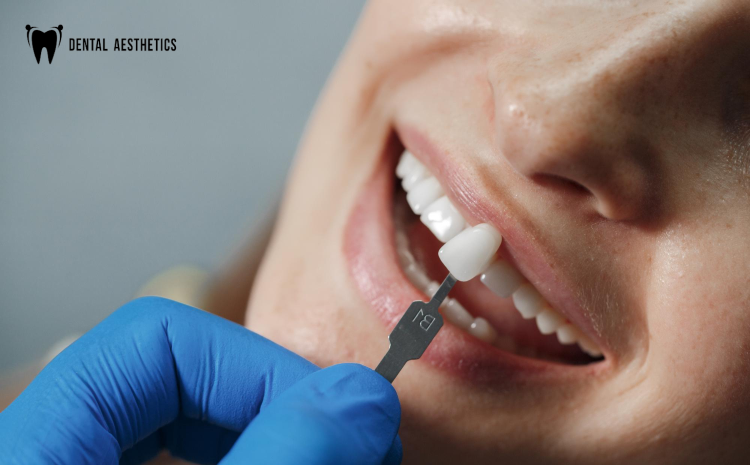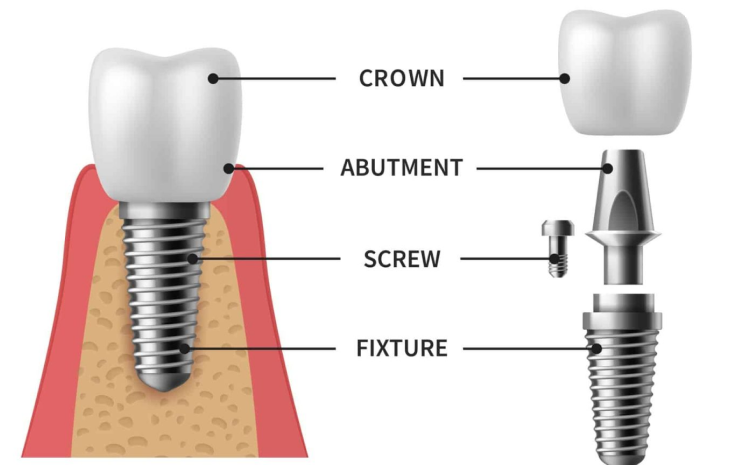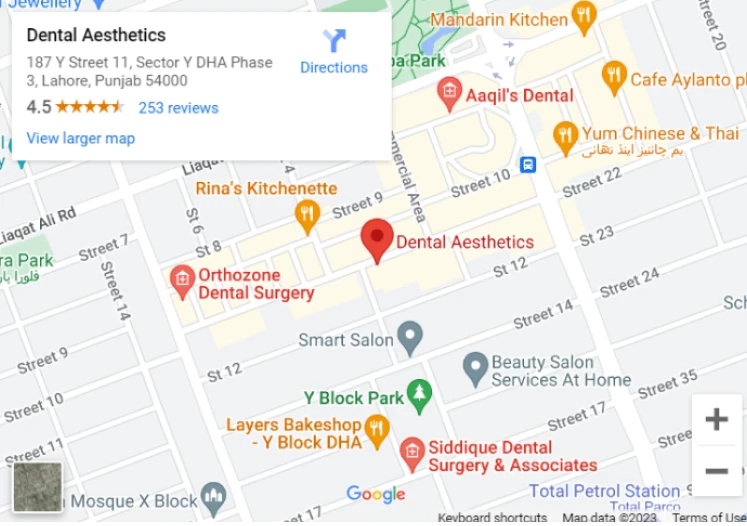The Complete Guide to Dental Implants in 2025

April 21, 2025
Introduction:
In 2025, dental implants will remain the gold standard for replacing missing teeth. With rapid technological advancements, evolving techniques, and more accessible treatment options, patients now have more reasons than ever to consider dental implants. Whether you're exploring the possibility for the first time or seeking updated information, this guide provides everything you need to know about dental implants in 2025.
What Are Dental Implants?:
Dental implants are artificial tooth roots made of titanium or zirconia that are surgically placed into the jawbone. They serve as a stable foundation for fixed or removable replacement teeth, such as crowns, bridges, or dentures. They provide a long-term solution to missing teeth that looks, feels, and functions just like natural teeth. Dental implants are widely recognized for their durability and natural appearance, making them an increasingly popular option for patients seeking permanent tooth replacement. The placement of implants also helps preserve jawbone density, which is often compromised after tooth loss.
Key Components of a Dental Implant| Component | Description |
|---|---|
| Implant Screw | Titanium or zirconia post inserted into the jawbone |
| Abutment | Connector piece placed on top of the implant screw |
| Crown | Artificial tooth that attaches to the abutment |
Benefits of Dental Implants
Choosing dental implants comes with numerous advantages that make them a superior option over traditional dentures or bridges:
- Natural Appearance and Function: Implants mimic the appearance and functionality of real teeth.
- Improved Speech and Comfort: Implants don’t slip like dentures, improving speech and overall comfort.
- Enhanced Self-Esteem: A restored smile can significantly boost self-confidence.
- Long-Lasting Durability: With proper care, dental implants can last 25 years or more.
- Bone Preservation: Implants stimulate the jawbone, preventing bone loss.
- No Impact on Adjacent Teeth: Unlike bridges, implants don’t rely on neighboring teeth for support.
Types of Dental Implants
Depending on individual needs and bone structure, dentists may recommend different types of dental implants:
1. Endosteal Implants
These are the most common type and are surgically placed directly into the jawbone. They are typically screw-shaped and made of titanium.
2. Subperiosteal Implants
Placed beneath the gum but above the jawbone, these implants are used for patients who don’t have sufficient healthy jawbone and can’t undergo bone augmentation procedures.
3. Zygomatic Implants
These are anchored in the cheekbone (zygoma) rather than the jawbone, making them ideal for patients with severe bone loss in the upper jaw.
4. Mini Dental Implants (MDIs)
Smaller and thinner than traditional implants, MDIs are a great option for stabilizing lower dentures or for patients with minimal bone.
Dental Implant Procedure: Step-by-Step
Getting dental implants involves a series of steps that span several months to ensure proper healing and integration. Step 1: Initial Consultation and Imaging
During this visit, your dentist will take X-rays, CT scans, and dental impressions. A detailed plan is created based on your oral and bone health.
Step 2: Bone Grafting (if necessary)If your jawbone lacks the necessary volume or density, bone grafting may be performed to provide a solid foundation for the implant.
Step 3: Implant Placement SurgeryUnder local anesthesia or sedation, the implant post is inserted into the jawbone. Healing caps may be placed to shape the gum tissue.
Step 4: Osseointegration (3-6 months)Over the next few months, the implant fuses with the bone in a process called osseointegration, ensuring stability.
Step 5: Abutment PlacementOnce healing is complete, the abutment is attached to the implant. This will support the artificial tooth (crown).
Step 6: Crown AttachmentA custom-made crown is secured onto the abutment, restoring aesthetics and function.
Timeline for Dental Implant Treatment| Stage | Duration |
|---|---|
| Consultation & Planning | 1-2 weeks |
| Surgery & Healing | 3-6 months (osseointegration) |
| Final Restoration | 2-4 weeks after healing |
Who Is a Good Candidate for Dental Implants?
Ideal candidates for dental implants should:
- Have one or more missing teeth
- Be in good general and oral health
- Have sufficient jawbone to support implants or be eligible for bone grafting
- Not smoke or be willing to quit before and after the procedure
- Be committed to maintaining oral hygiene and attending follow-up visits
Risks and Complications
While dental implants have a high success rate, there are still risks to consider
- Infection at the implant site
- Nerve damage, leading to pain or numbness
- Sinus issues, especially for implants in the upper jaw
- Implant failure, often due to poor osseointegration or infection
- Gum recession, which can affect the aesthetics and stability of the implant
Tip: Regular follow-ups and adherence to post-op care instructions significantly reduce these risks.
Cost of Dental Implants in 2025
If you are facing any of these problems that are affecting and diminishing your smile, don’t fret! Luckily for you, there are treatments for these problems that can restore your smile to its original beauty!
The cost of dental implants varies widely depending on multiple factors, including the number of implants, materials used, and location of the dental clinic.
Average Cost Breakdown| Service | Estimated Cost (USD) |
|---|---|
| Single Tooth Implant | $3,000 - $6,000 |
| Full Mouth Implants | $20,000 - $45,000+ |
| Bone Grafting | $300 - $3,000 |
Keep in mind that these are ballpark figures, and actual costs may vary. Many clinics now offer payment plans or financing options to make implants more accessible.

Innovations in Dental Implants in 2025
Technological advancements continue to transform the dental implant field:
Here are some of the latest advancements in dental implant technology:
- 3D Printed Implants: Enable customized design and rapid production.
- AI-Powered Planning Tools: Help surgeons plan precise implant placements.
- Guided Surgery Systems: Increase accuracy and reduce surgery time.
- Immediate Load Implants: Allow placement of temporary crowns the same day.
- Zirconia Implants: Metal-free and ideal for patients with metal sensitivities.
Aftercare and Maintenance
Maintaining your implants is essential for their longevity and functionality:
- Brush at least twice daily: Use a soft-bristled toothbrush to avoid damaging your gums and implants.
- Floss daily: Use dental floss or a water flosser to clean between the implants and natural teeth.
- Use an antimicrobial mouthwash: This helps to reduce bacteria and prevent infection.
- Avoid chewing on hard objects: Things like ice or pens can damage your implants.
- Schedule professional cleanings: Visit your dentist every 6 months for a professional cleaning to maintain implant health.
Dental Implants vs Other Tooth Replacement Options
| Feature | Dental Implants | Bridges | Dentures |
|---|---|---|---|
| Longevity | 15-25+ years | 5-15 years | 5-8 years |
| Jawbone Preservation | yes | No | No |
| Comfort | High | Moderate | Low |
| Maintenance | Low | Moderate | Highr |
| Stability | Excellent | Good | Poor |
Dental Implants Around the World
| Country | Average Cost (USD) | Popular Cities |
|---|---|---|
| USA | $3,000 - $6,000 | New York, LA, Miami |
| UK | $2,500 - $5,000 | London, Manchester |
| India | $600 - $1,200 | Mumbai, Delhi |
| Turkey | $800 - $1,500 | Istanbul, Ankara |
| Pakistan | $400 - $1,000 | Lahore, Karachi, Islamabad |
Many people now travel abroad for dental implant treatment due to cost savings, a practice known as dental tourism. Countries like Turkey, India, and Mexico are becoming popular for high-quality yet affordable dental care.
FAQs: Dental Implants in 2025
1. Are dental implants painful?
The procedure involves some discomfort, but local anesthesia minimizes pain. Most patients report minimal post-operative pain.
2. How long do dental implants last?With proper care, dental implants can last over 25 years.
3. Can anyone get dental implants?Most healthy individuals can get implants, but an evaluation is needed to determine suitability.
4. Are there alternatives to dental implants?Yes, alternatives include dental bridges and dentures.
5. What’s the success rate of dental implants in 2025?Success rates are over 95% thanks to improved materials and techniques.
6. Do dental implants look like real teeth?Absolutely. Implants are designed to match the shape, size, and color of your natural teeth.
7. What if I don’t have enough bone for implants?Bone grafting or zygomatic implants may be recommended.
8. Can smokers get dental implants?
Smokers are at higher risk of implant failure, but they may still be candidates with proper management.
9. Are dental implants covered by insurance?Some insurance plans cover part of the cost, especially when medically necessary. Always check with your provider.
10. How do I find a qualified dental implant specialist?Look for a board-certified oral surgeon, periodontist, or prosthodontist with good reviews and advanced training.
Conclusion
Dental implants in 2025 continue to be a life-changing solution for patients seeking a permanent and aesthetically pleasing replacement for missing teeth. With the latest innovations, increasing global accessibility, and high success rates, more individuals are embracing implants than ever before. Whether you're considering your first implant or exploring your options, this complete guide aims to provide the clarity, confidence, and information needed to take the next step toward restoring your smile.
Always consult with a qualified dental professional to discuss your unique needs and determine the best treatment plan tailored to your oral health condition.


